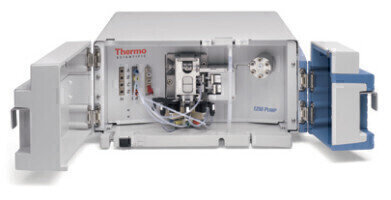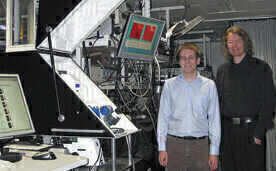News & Views
Method to Detect Dangerous Carbonyl Compounds
Jun 08 2011
Thermo Fisher Scientific, Inc announced that it has developed a powerful method for the trace-level analysisof carbonyl compounds in a wide range of matrices. Carbonyl compounds, hazardous pollutants released from diverse sources including motor vehicles and industrial emissions, have been shown to have adverse effects on human health. This new UHPLC/UV method enables the separation, detection and quantitation of parts per billion (ppb) concentrations of low molecular weight carbonyls in complex samples, safeguarding human health and ensuring compliance with industry regulations. Carbonyl compounds from motor vehicle and industrial emissions are precursors to ground-level ozone, a major component of smog, and are strongly associated with respiratory and pulmonary problems. They are also found in food and drinking water and various indoor living and working environments. Formaldehyde, a common indoor pollutant, is released from numerous sources including plywood, furniture, paper products, glues, cosmetics, tobacco smoke and many others. Formaldehyde and acetaldehyde have been classified as probable or known human carcinogens by regulatory agencies including the United States Environmental Protection Agency (EPA) and International Agency of Cancer Research (IARC).
In accordance with the Clean Air Act, the EPA enforces ambient monitoring of three carbonyl pollutants – formaldehyde, acetaldehyde and acetone – and recommends surveillance of several others in areas with persistently high ozone levels. In addition, the U.S. Occupational Safety and Health Agency (OSHA) sets legal permissible carbonyl exposure limits in the workplace. This has created demand for sensitive and accurate methods for trace-level analysis of carbonyl compounds in a range of matrices to determine exposure pathways, health outcomes and effective
pollution control strategies. The new Thermo Fisher UHPLC/UV method is a powerful alternative to other techniques currently used to analyse carbonyl compounds including conventional HPLC–based procedures, which may be limited by long run times, poor resolution and low separation efficiencies. In the Thermo Fisher method, UPHLC/UV analysis is performed on a Thermo Scientific Accela UPHLC system coupled with sub-2μm Thermo Scientific Hypersil GOLD columns. The use of sub-2μm particle, highperformance columns facilitates rapid analysis of challenging samples by improving chromatographic resolution, speed and sensitivity. The Accela™ 1250 also offers flexibility of performing both HPLC and UHPLC analyses and is capable of operational pressures of up to 1250 bar due to its very low internal back pressure.
Digital Edition
Lab Asia 31.6 Dec 2024
December 2024
Chromatography Articles - Sustainable chromatography: Embracing software for greener methods Mass Spectrometry & Spectroscopy Articles - Solving industry challenges for phosphorus containi...
View all digital editions
Events
Nov 27 2024 Istanbul, Turkey
Jan 22 2025 Tokyo, Japan
Jan 22 2025 Birmingham, UK
Jan 25 2025 San Diego, CA, USA
Jan 27 2025 Dubai, UAE




















